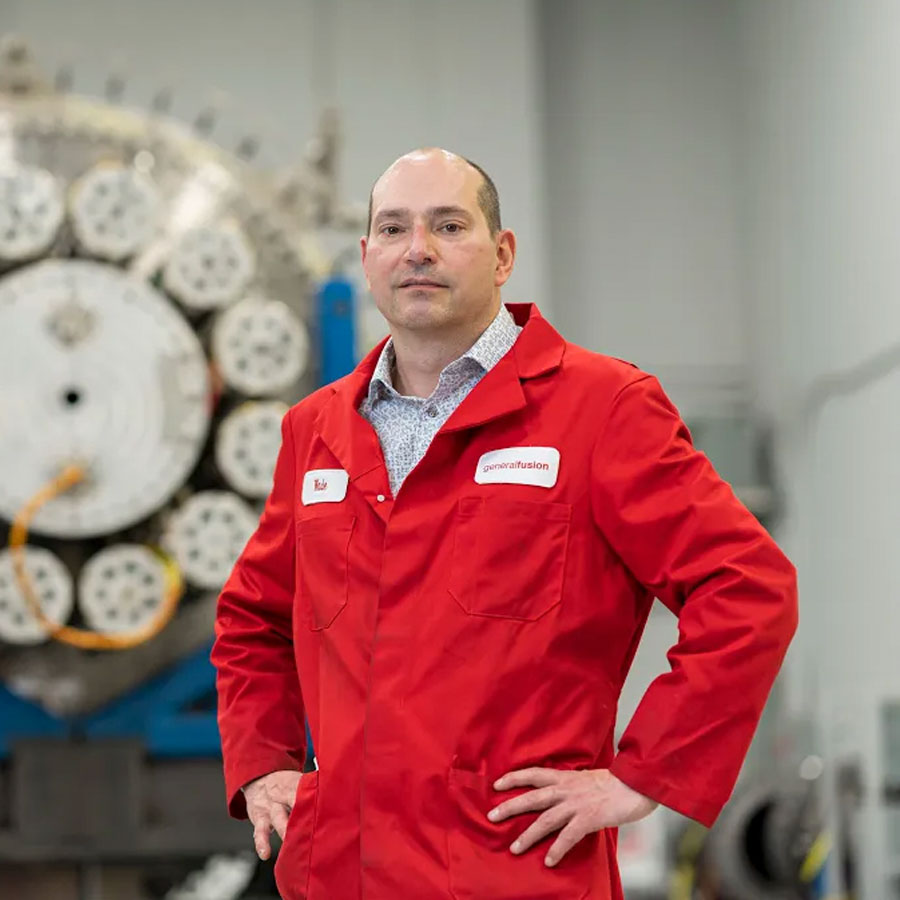By Michael Delage – Chief Technology Officer at General Fusion
The media coverage surrounding the Fusion 2030 proposal has been a reminder that the promise of fusion is not lost on the world. In shining the spotlight on this report, a discussion has ignited about practical pathways for clean energy technology and its development. General Fusion is a strong supporter of Fusion 2030, and I have been speaking to people around the country and describing to them what the pathway to making fusion a commercial reality might look like.
As for any new technology, there’s a development pathway that needs to be travelled to take fusion from lab experiment to power on the grid. We’re further along this pathway than at any point in history, but there’s still road to travel and challenges to overcome. For Canada, the first step is capacity building: national leadership to renew our research infrastructure and invest in Canadian talent.
This, in essence, is the objective of the Fusion 2030 initiative. The document we collaborated on with leading Canadian universities, academic institutions and government laboratories outlines a roadmap to support the development of fusion energy through a national fusion research program. The Fusion 2030 initiative specifically calls for a program to develop research capacity (research faculty positions and facilities), train the next generation of graduate students to conduct the research and advance the science while enabling collaboration with international researchers and the private sector. At the forefront of fusion energy development, we more than anyone see the urgent need for more highly trained people in this field.
It might come as a surprise to learn that Canada is the only G7 country that does not have a national fusion program. While the US, the EU, Japan and China (and others) have seen the promise of clean fusion energy and made its pursuit a national priority, Canada withdrew support for its national research program in the mid-1990s. As a result, many Canadian universities no longer train researchers in plasma physics or other fields critical to the development of fusion technology. For example, the University of British Columbia, where General Fusion Founder Dr. Michel Laberge earned his Ph.D in fusion physics, no longer has a plasma physics program.
Private sector development of fusion energy can’t exist in a vacuum. Since its founding in 2002, General Fusion has grown to become the de-facto largest fusion research program in Canada. We employ 65 people, including 12 Ph.Ds and many more with advanced technical experience, and put millions of dollars every year back into Canada’s manufacturing and high tech sectors. We also struggle to find local talent in the fields that we need to advance our technology – fields like plasma physics. A national fusion research program would help provide us with the expertise and research collaborators we need to be successful.
The development of fusion energy as a commercially viable power source will create skilled jobs in the manufacturing and tech sectors, reduce carbon emissions and air pollution, and contribute to long-term energy sustainability and security. While some media coverage of the Fusion 2030 proposal has run with overly exuberant headlines, their enthusiasm is understandable – a source of energy that is clean, safe, abundant and available on-demand would be a game changer.
Canada is well placed to get back in the game, and with advances in fusion technology made in the last few years now is the time to step up and take leadership in clean energy innovation.
[vc_separator type=’normal’ position=’center’ color=” thickness=’0′ up=” down=’50’]
Download the Fusion 2030 Roadmap
Image at top credit: NASA Earth Sciences

